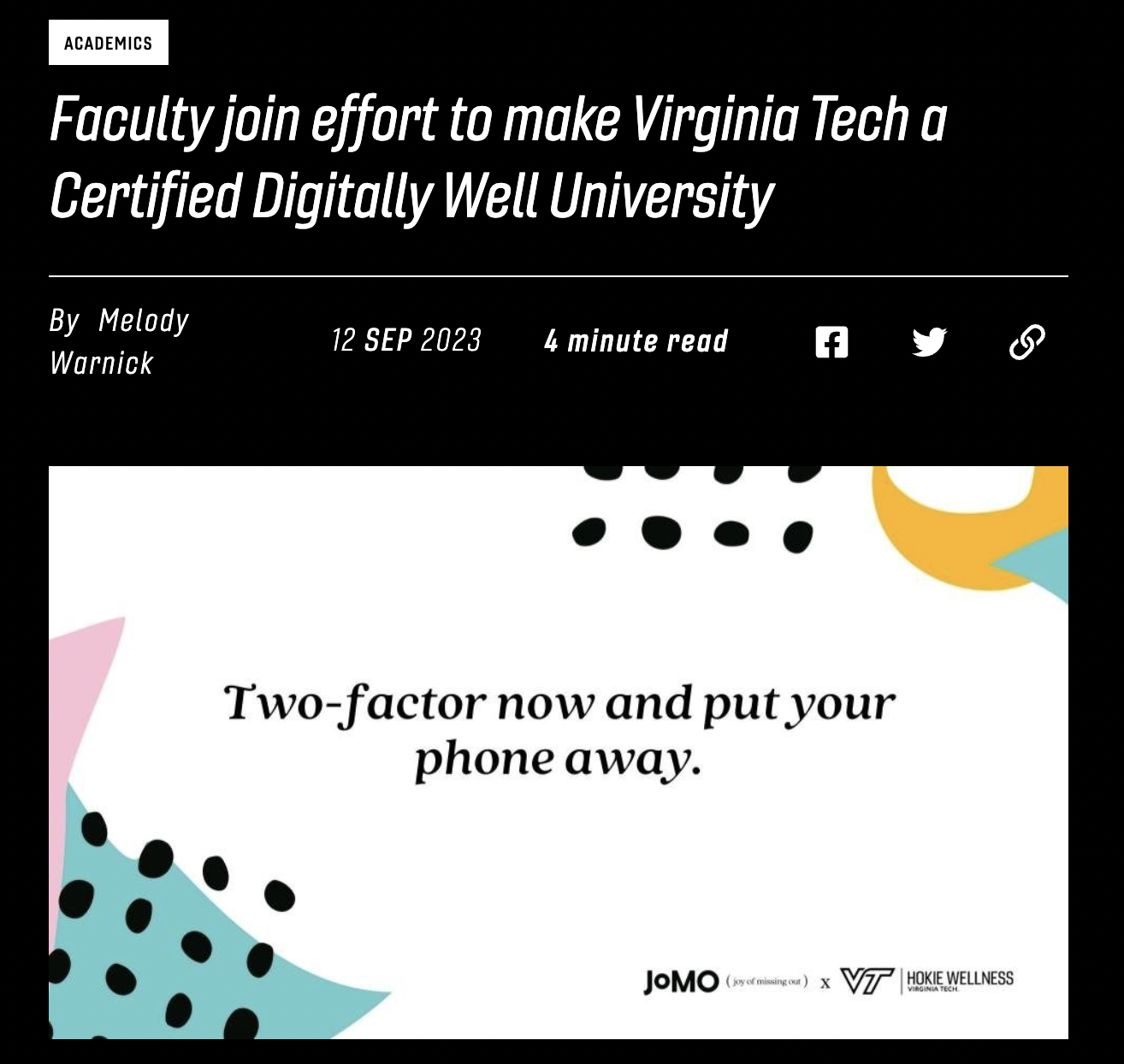Digital Well-being in the Classroom
As Virginia Tech worked to become the first Certified Digitally Well University in the nation, Laurie Fritsch, assistant director of Hokie Wellness, recruited a secret weapon in the battle to get students to put down their screens: faculty members.
Last spring, a pilot group of instructors shared slides and playful short-form videos in class about the dangers of technological distraction and the benefits of living life offline.
“Did you know that multitasking can add up to a loss of 40 percent of your productivity?” asked one slide.
Another warned, “Students who can see the screen of a multitasker’s laptop (but were not multitasking themselves) score up to 17 percent lower on comprehension than those who had no distracting view.”
A video showed a student breaking up with her phone. “It’s not me,” she said, “it’s you.”
The messaging, said Fritsch, “helps both faculty and students think about their digital intentions and boundaries.”
The Pressure to Be Online
Faculty were a vital element of the digital wellness initiative, created in collaboration with Christina Crook of JOMO (Joy of Missing Out), because they unwittingly create some of the unrelenting pressure for students to be always online.
Canvas notifications. Emails. Online assignments. The litany of academic communication makes it tough for students to step away from screens.
With support from the Office of Undergraduate Education, Fritsch and Crook keynoted the university’s Summer Institute and began exploring the need for digital wellness with faculty.
Check our programs and start your journey toward mindful tech use today.

